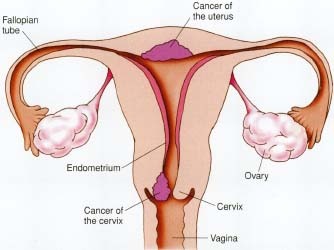Current guidelines underestimate US cervical cancer incidence and older women’s risk
Rates of cervical cancer in American women may be higher than previously thought, and the disease may arise most often at an age when adequately screened women are advised to stop getting screened. The findings come from a new study published early online in CANCER, a peer-reviewed journal of the American Cancer Society. The results should be taken into consideration when the national guidelines for cervical cancer screening are reviewed.
Removal of the uterine cervix through a hysterectomy eliminates a woman’s risk of developing cervical cancer, but previous estimates of cervical cancer rates in the United States have included these women in their calculations. “In order to make accurate estimates of the true rates of cervical cancer by age in the United States and monitor trends in the occurrence of disease, it is important to calculate the occurrence of cervical cancer only among women who are at risk,” explained Anne Rositch, PhD, of the University of Maryland School of Medicine, in Baltimore.
To do so, Dr. Rositch and her colleagues analyzed hysterectomy prevalence and cervical cancer incidence from 2000 to 2009. When the researchers estimated cervical cancer rates only among women with a cervix, they found that rates of disease in older women and black women were much higher than previously reported. Overall, incidence rates were 11.7 cases per 100,000 women before correcting for hysterectomies compared with 18.6 per 100,000 after correction.
Also, previous reports showed that the incidence peaks at age 40 to 44 years (15.6 cases per 100,000 women) and then levels off. After correcting for hysterectomy, though, the incidence continued to increase with age, peaking at a higher rate (27.4 cases per 100,000 women) and at an older age (65 to 69 years). The effect was most pronounced among black women, given their higher prevalence of hysterectomy than white women.
 The authors noted that their findings should be considered when setting national guidelines for the appropriate age to stop screening for cervical cancer. “Current guidelines recommend exiting women with recent negative screening from routine screening at age 65 years, and yet our corrected calculations show that women just past this age have the highest rate of cervical cancer,” said senior author Patti Gravitt, PhD, of the Johns Hopkins Bloomberg School of Public Health. Dr. Rositch added, “It will be important to clarify in future studies whether the continued increase in cancer rates with age and the higher rates in black women represent a failure in our screening programs or a failure of the women to be screened, so that appropriate interventions can be developed to reduce the burden of cancer in these women.”
The authors noted that their findings should be considered when setting national guidelines for the appropriate age to stop screening for cervical cancer. “Current guidelines recommend exiting women with recent negative screening from routine screening at age 65 years, and yet our corrected calculations show that women just past this age have the highest rate of cervical cancer,” said senior author Patti Gravitt, PhD, of the Johns Hopkins Bloomberg School of Public Health. Dr. Rositch added, “It will be important to clarify in future studies whether the continued increase in cancer rates with age and the higher rates in black women represent a failure in our screening programs or a failure of the women to be screened, so that appropriate interventions can be developed to reduce the burden of cancer in these women.”
###
Evelyn Martinez
sciencenewsroom@wiley.com
201-748-6358
Wiley